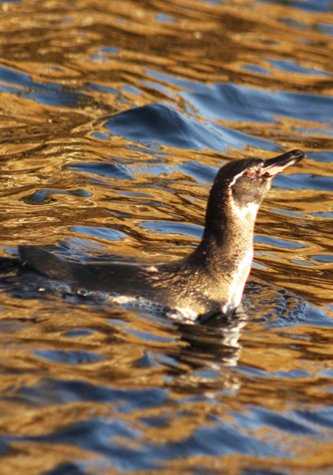We have arrived in Urbina Bay, named after an early Ecuadorian president, to visit the island of Isabela, the largest and the second youngest of the Enchanted Islands. Isabela has one of the most magical geological features of the Galápagos. Here we can see the uplifting of the ocean floor all over the coastline of this visitor site, an event that took place in 1954.
After a wet landing we explored the island in search of land iguanas and giant tortoises. Near the inland path, we encountered several giant tortoises of different sizes (some adult, some juvenile) all belonging to the population of Alcedo Volcano, a dome-type tortoise.
Many years ago, the island of Isabela was the subject of a significant and successful program in the restoration of the local ecosystems. More than 150,000 feral goats were eradicated from this island. An introduced species, these goats were damaging the endemic flora and competing with endemic fauna. Therefore, it was important to eradicate these introduced mammals to give the local species a chance to restore their numbers to a sustainable level.
After a hike under the equatorial sun, we took the opportunity to go for a swim and refresh ourselves.
In the afternoon we repositioned the National Geographic Endeavour a few miles north to visit Tagus Cove. Charles Darwin himself disembarked at his visitor site, and today some interesting historic graffiti can be found, dating back to the time when wayfarers sought and found a sheltered harbor here.
Some of us decided to go snorkeling, kayaking, or Zodiac riding while others took the chance to hike along tuff cliffs to see the famous Darwin Lake. On the Zodiac ride we found penguins, flightless cormorants, blue-footed boobies, and sea lions fishing. The light was just perfect for photography: the sunset reflected on the waves giving the water some golden colors contrasted by black and white penguins fishing along the shore.







